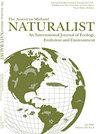Environmental Niche and Demographic Modeling of American Chestnut near its Southwestern Range Limit
IF 0.6
4区 环境科学与生态学
Q4 Agricultural and Biological Sciences
引用次数: 2
Abstract
Abstract. The unintentional introduction and rapid spread of chestnut blight (caused by Cryphonectria parasitica (Murr.) Barr) in the early 20th century resulted in the demise of American chestnut (Castanea dentata (Marsh.) Borkh.; Fagaceae) as a major component of forest canopies resulting in negative impacts on eastern forest communities. Research efforts over the last century have documented the persistence of occasional trees and root crown/ stump sprouts throughout much of the species' historic range, providing the basis for ongoing breeding of blight-resistant trees and restoration efforts. Here we use environmental niche modeling to investigate whether environmentally suitable habitat remains for remnant trees throughout the southwestern historical range, and to evaluate the reintroduction potential of this relatively understudied part of the historical distribution. We also use stage-structured matrix projection models to investigate the potential demographic future of C. dentata near the historical southwestern range limit based on observations of American chestnut in these areas over the last several decades. We found suitable upland habitat with areas of high forest canopy cover occurs throughout much of the southwestern portion of the historical range and that populations of American chestnut in these areas are predicted to drastically decline over the coming decades. These results highlight the continued presence of suitable C. dentata habitat throughout the southwestern extent of its historical distribution, which should be incorporated into evaluations for future reintroduction, and emphasize the need for efforts to locate, conserve, and introduce genetic material from individuals with locally adapted genotypes into active restoration programs.美国板栗西南边界环境生态位与人口统计学模型
摘要板栗疫病的无意引入和迅速传播(由板栗疫病引起)。Barr)在20世纪初导致美洲板栗(Castanea dentata (Marsh))的灭绝。Borkh。壳斗科)作为森林冠层的主要组成部分,对东部森林群落造成负面影响。上个世纪的研究工作记录了在该物种的大部分历史范围内,偶尔存在的树木和根冠/树桩芽的持久性,为持续培育抗枯萎病树木和恢复工作提供了基础。本研究利用环境生态位模型对西南地区历史范围内的残树是否保留了环境适宜的栖息地进行了研究,并评估了这一历史分布中研究相对较少的部分的再引入潜力。在过去几十年对美洲板栗的观测基础上,我们还使用阶段结构矩阵投影模型来研究在历史西南范围限制附近的美洲板栗的潜在人口未来。我们发现,在历史范围的西南大部分地区都有适合的高原栖息地,森林冠层覆盖面积大,这些地区的美洲板栗种群预计在未来几十年将急剧下降。这些结果强调了齿齿牙鼠在其历史分布的西南范围内持续存在合适的栖息地,应纳入未来重新引入的评估,并强调需要努力定位,保存和引入具有当地适应基因型的个体的遗传物质到积极的恢复计划中。
本文章由计算机程序翻译,如有差异,请以英文原文为准。
求助全文
约1分钟内获得全文
求助全文
来源期刊

American Midland Naturalist
环境科学-生态学
CiteScore
1.20
自引率
0.00%
发文量
38
审稿时长
18-36 weeks
期刊介绍:
The American Midland Naturalist has been published for 90 years by the University of Notre Dame. The connotations of Midland and Naturalist have broadened and its geographic coverage now includes North America with occasional articles from other continents. The old image of naturalist has changed and the journal publishes what Charles Elton aptly termed "scientific natural history" including field and experimental biology. Its significance and breadth of coverage are evident in that the American Midland Naturalist is among the most frequently cited journals in publications on ecology, mammalogy, herpetology, ornithology, ichthyology, parasitology, aquatic and invertebrate biology and other biological disciplines.
 求助内容:
求助内容: 应助结果提醒方式:
应助结果提醒方式:


